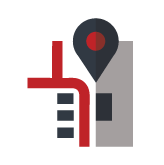Inventory is more than a list of products—it’s the backbone of your business operations. For companies managing stock across multiple warehouses, locations, or entities, inventory management isn’t just about quantities—it’s about visibility, accuracy, cost control, and scalability.
In this guide, you’ll learn how multi-location inventory management works, why legacy systems fall short, and how modern cloud accounting software like Gravity Software gives you complete inventory visibility and control across your business.



